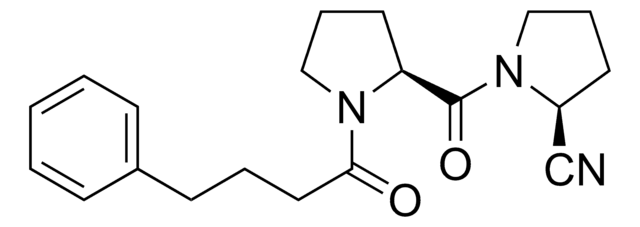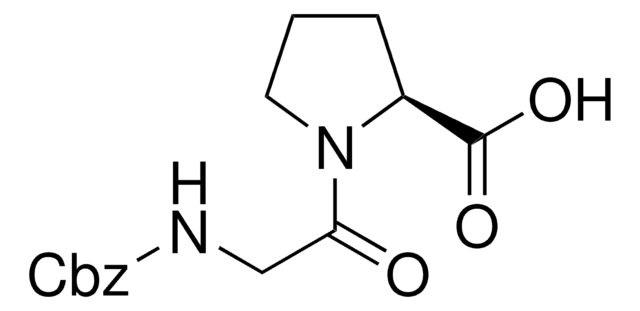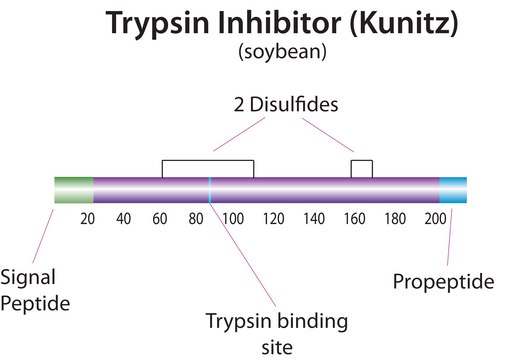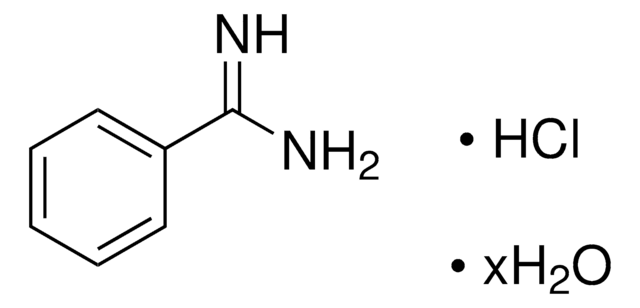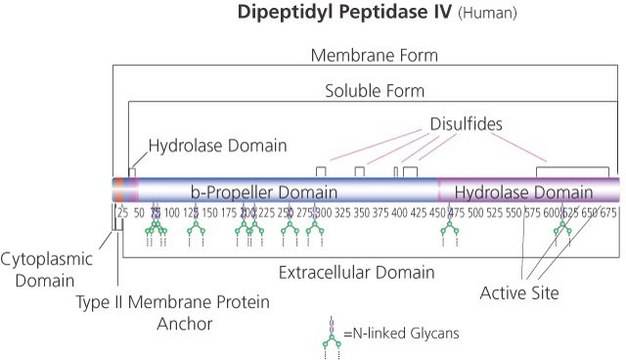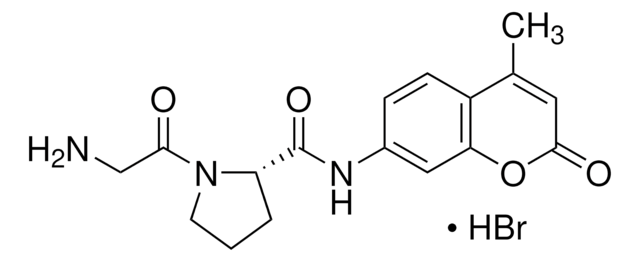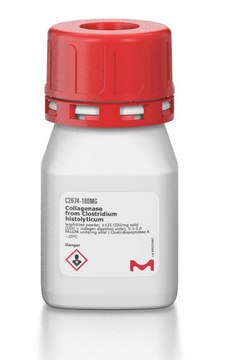推荐产品
质量水平
方案
≥98% (HPLC)
表单
powder
储存条件
desiccated
颜色
white to tan
溶解性
DMSO: ≥10 mg/mL
储存温度
−20°C
SMILES字符串
N2([C@@H](CCC2)C(=O)N3[C@@H](CCC3)C=O)C(=O)OCc1ccccc1
InChI
1S/C18H22N2O4/c21-12-15-8-4-10-19(15)17(22)16-9-5-11-20(16)18(23)24-13-14-6-2-1-3-7-14/h1-3,6-7,12,15-16H,4-5,8-11,13H2/t15-,16-/m0/s1
InChI key
ORZXYSPOAVJYRU-HOTGVXAUSA-N
应用
Z-Pro-prolinal was used to inhibit activation of rekallikrein in Prolylcarboxypeptidase assay in HUVECs. ZPP was also used in assays to identify enzymes important in the processing of angiotensin peptides in human glomerular endothelial cells.
生化/生理作用
Z-Pro-prolinal is a potent selective inhibitor of prolyl oligopeptidase (POP), also known as prolyl endopeptidase (PEP or PE).
Z-Pro-prolinal is a potent, selective inhibitor of Prolyl oligopeptidase (POP), also known as prolyl endopeptidase (PEP or PE). Ki = 1 nM.
POP has been connected to memory and mood through regulation of the brain levels of its peptide substrates, which include AVP, substance P, neurotensin and TRH and is a potential target in cognitive function, memory, and neurodegenerative disorders such as amnesia, Alzheimer′s disease, and depression. POP has recently been reported to be involved in the release of the tetrapeptide acetyl-N-Ser-Asp-Lys-Pro (Ac-SDKP) from its precursor, 43-mer thymosin β4 (Tβ4). Ac-SDKP is involved in hemopoietic stem cell differentiation, is pro-angiogenic and antifibrogenic.
POP has been connected to memory and mood through regulation of the brain levels of its peptide substrates, which include AVP, substance P, neurotensin and TRH and is a potential target in cognitive function, memory, and neurodegenerative disorders such as amnesia, Alzheimer′s disease, and depression. POP has recently been reported to be involved in the release of the tetrapeptide acetyl-N-Ser-Asp-Lys-Pro (Ac-SDKP) from its precursor, 43-mer thymosin β4 (Tβ4). Ac-SDKP is involved in hemopoietic stem cell differentiation, is pro-angiogenic and antifibrogenic.
警示用语:
Warning
危险声明
危险分类
Acute Tox. 4 Oral - Eye Irrit. 2
储存分类代码
11 - Combustible Solids
WGK
WGK 3
闪点(°F)
Not applicable
闪点(°C)
Not applicable
历史批次信息供参考:
分析证书(COA)
Lot/Batch Number
Charles M Ensor et al.
bioRxiv : the preprint server for biology (2021-09-22)
Angiotensin converting enzyme 2 (ACE2) is an enzyme that limits activity of the renin-angiotensin system (RAS) and also serves as a receptor for the SARS-CoV-2 Spike (S) protein. Binding of S protein to ACE2 causes internalization which activates local RAS.
Juan Carlos Q Velez et al.
American journal of physiology. Renal physiology, 302(12), F1583-F1594 (2012-03-31)
The intraglomerular renin-angiotensin system (RAS) is linked to the pathogenesis of progressive glomerular diseases. Glomerular podocytes and mesangial cells play distinct roles in the metabolism of angiotensin (ANG) peptides. However, our understanding of the RAS enzymatic capacity of glomerular endothelial
Aurélien F A Moumbock et al.
Archiv der Pharmazie, 356(1), e2200371-e2200371 (2022-11-01)
Host cell entry of severe acute respiratory syndrome coronavirus 2 (SARS-CoV-2) is facilitated via priming of its spike glycoprotein by the human transmembrane protease serine 2 (TMPRSS2). Although camostat and nafamostat are two highly potent covalent TMPRSS2 inhibitors, they nevertheless
Mikhail Lebedin et al.
European journal of immunology, 53(5), e2250210-e2250210 (2023-03-02)
Diverse autoantibodies were suggested to contribute to severe outcomes of COVID-19, but their functional implications are largely unclear. ACE2, the SARS-CoV-2 receptor and a key regulator of blood pressure, was described to be one of many targets of autoantibodies in
Mikhail Lebedin et al.
iScience, 27(3), 109330-109330 (2024-03-18)
Identifying immune modulators that impact neutralizing antibody responses against severe acute respiratory syndrome coronavirus type 2 (SARS-CoV-2) is of great relevance. We postulated that high serum concentrations of soluble angiotensin-converting enzyme 2 (sACE2) might mask the spike and interfere with
商品
We offers many products related to neuropeptidases for your research needs.
我们的科学家团队拥有各种研究领域经验,包括生命科学、材料科学、化学合成、色谱、分析及许多其他领域.
联系技术服务部门